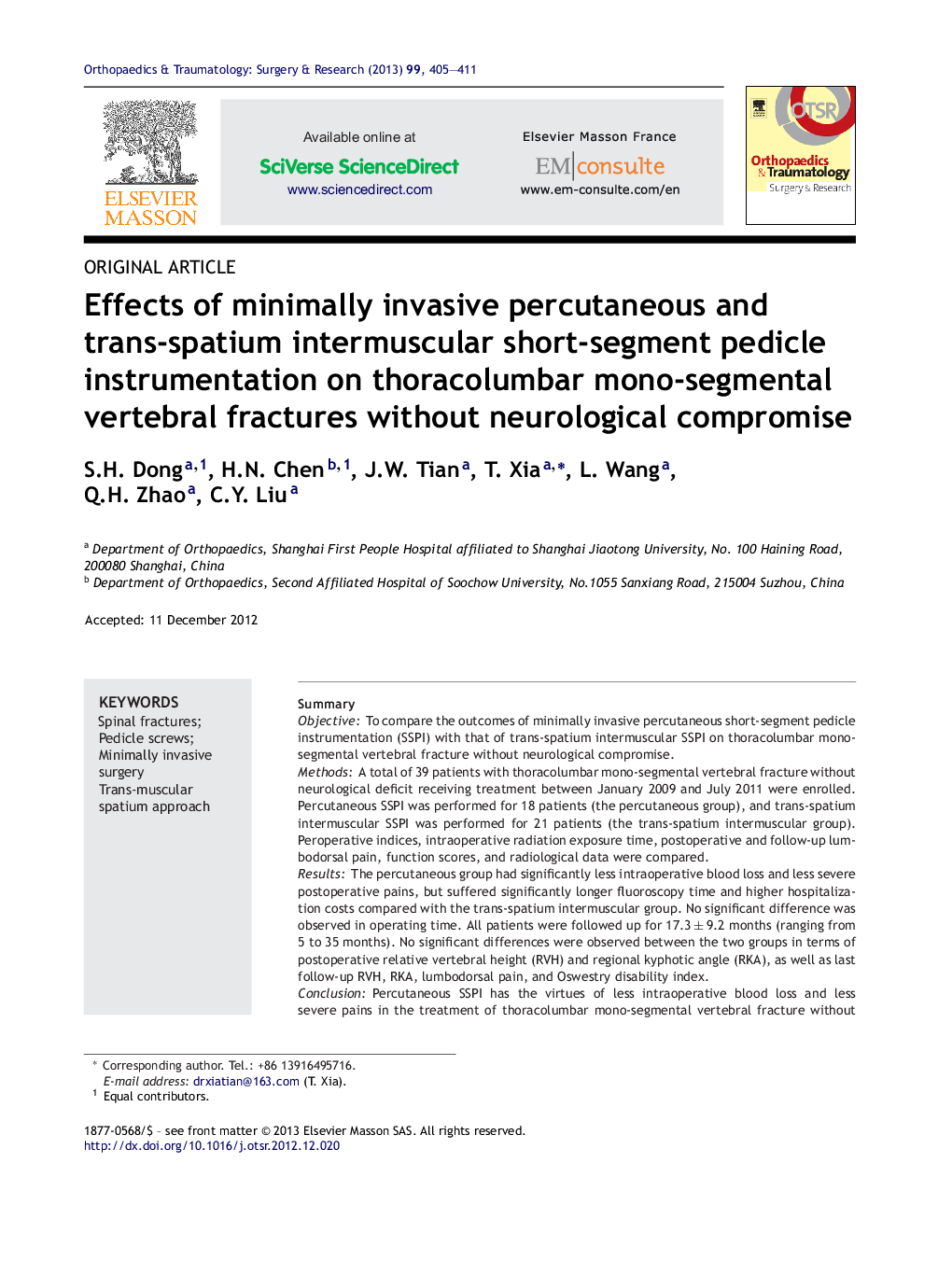| کد مقاله | کد نشریه | سال انتشار | مقاله انگلیسی | نسخه تمام متن |
|---|---|---|---|---|
| 4081483 | 1267594 | 2013 | 7 صفحه PDF | دانلود رایگان |

SummaryObjectiveTo compare the outcomes of minimally invasive percutaneous short-segment pedicle instrumentation (SSPI) with that of trans-spatium intermuscular SSPI on thoracolumbar mono-segmental vertebral fracture without neurological compromise.MethodsA total of 39 patients with thoracolumbar mono-segmental vertebral fracture without neurological deficit receiving treatment between January 2009 and July 2011 were enrolled. Percutaneous SSPI was performed for 18 patients (the percutaneous group), and trans-spatium intermuscular SSPI was performed for 21 patients (the trans-spatium intermuscular group). Peroperative indices, intraoperative radiation exposure time, postoperative and follow-up lumbodorsal pain, function scores, and radiological data were compared.ResultsThe percutaneous group had significantly less intraoperative blood loss and less severe postoperative pains, but suffered significantly longer fluoroscopy time and higher hospitalization costs compared with the trans-spatium intermuscular group. No significant difference was observed in operating time. All patients were followed up for 17.3 ± 9.2 months (ranging from 5 to 35 months). No significant differences were observed between the two groups in terms of postoperative relative vertebral height (RVH) and regional kyphotic angle (RKA), as well as last follow-up RVH, RKA, lumbodorsal pain, and Oswestry disability index.ConclusionPercutaneous SSPI has the virtues of less intraoperative blood loss and less severe pains in the treatment of thoracolumbar mono-segmental vertebral fracture without neurological deficit. When compared with trans-spatium intermuscular SSPI, it results in longer intraoperative radiation exposure time and a higher surgery cost. To us, percutaneous SSPI has no advantage over trans-spatium intermuscular SSPI in therapeutic outcomes.Level of evidenceLevel IV. Retrospective study.
Journal: Orthopaedics & Traumatology: Surgery & Research - Volume 99, Issue 4, June 2013, Pages 405–411